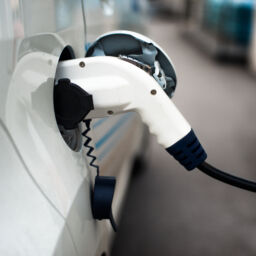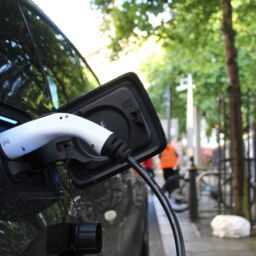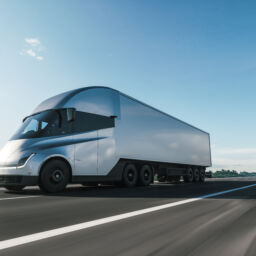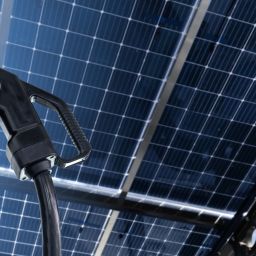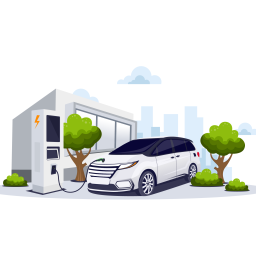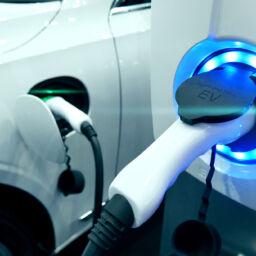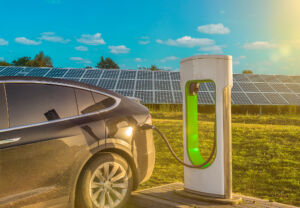 It’s no secret that electric vehicles are on the rise in the U.S. and abroad, yet only 1% of cars on the road today are electric. Major car manufacturers worldwide are starting to make public pronouncements demonstrating their commitment to electrifying their offerings. Here are some examples:
It’s no secret that electric vehicles are on the rise in the U.S. and abroad, yet only 1% of cars on the road today are electric. Major car manufacturers worldwide are starting to make public pronouncements demonstrating their commitment to electrifying their offerings. Here are some examples:
- GM recently stated that it aims to stop selling new gasoline powered cars and light trucks by 2035
- Ford has committed that they will have an all-electric line-up in Europe by 2030
- Volvo has committed to providing only electric cars by 2030
- Volkswagen plans to eliminate combustion engines starting in 2026
- Toyota has pledged to stop producing combustion engines by 2040
- Several other major car companies have pledged to phase out combustion engines in their business plans but have not offered definitive timelines
This is a sea of change in the world of automobiles. Moving away from combustion engines almost entirely, within a 10-20 year window, is the most seismic shift in transportation that we are likely to see within our lifetimes. However, a change this large will inevitably have significant consequences as well. Here are some questions that need to be answered:
- Will all cars switch to electric, and if so, how long will this take?
- How will people charge their cars in the future?
- Can the current grid even handle the switch to an all-EV world?
- What about all the other vehicles such as delivery vans, buses, and long haul trucks?
Over the coming weeks and months, SCF will be reviewing each question in detail and proposing ideas to overcome these challenges. In this article, we will tackle the first question:
- Will all cars switch to electric, and if so, how long will this take?
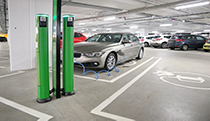 When the first mass-market EVs became commercially available back in 2011 (with the introduction of the Nissan Leaf), many early adopters were excited, but few others. The first Nissan Leaf had a driving range of about 100 miles, and if you drove it at average highway speeds, that number came down to around 80 miles. At the time, there were no public chargers to support the charging of EVs, so everyone charged them at home, and the technology at the time (Level II chargers) allowed people to charge them at a rate of about 15 miles/hour. This meant that if you drove your batteries down to zero, you would be parked for 6+ hours. If you drove your car for 40 miles, as the average suggested, and parked your vehicle overnight, then you would be good, right? Unfortunately, that was not the reality that most people experienced.
When the first mass-market EVs became commercially available back in 2011 (with the introduction of the Nissan Leaf), many early adopters were excited, but few others. The first Nissan Leaf had a driving range of about 100 miles, and if you drove it at average highway speeds, that number came down to around 80 miles. At the time, there were no public chargers to support the charging of EVs, so everyone charged them at home, and the technology at the time (Level II chargers) allowed people to charge them at a rate of about 15 miles/hour. This meant that if you drove your batteries down to zero, you would be parked for 6+ hours. If you drove your car for 40 miles, as the average suggested, and parked your vehicle overnight, then you would be good, right? Unfortunately, that was not the reality that most people experienced.
Most people, on average, do only drive about 40 miles a day, so Nissan figured the range would be adequate. The problem is that while the average distance people drive is about 40 miles/day, what happens is that most days, people drive 20-30 miles, and a couple of times a week, they may drive 100+ miles. Additionally, people often go on trips for the weekend and may drive 200-500 miles or more. On paper, the average still remains 40 miles/day, but the battery capacity at the time simply would not support a typical family if they only had electric cars.
Fast forward to today, and the current mass-market EVs have a range between 200-250 miles. While this is considerably better than the original Nissan Leaf’s range, it still would not work for people that have longer commutes or go for longer trips periodically. While the public infrastructure has improved dramatically as well, more than 80% of the publicly available EV chargers are still Level II chargers, and would take several hours to charge an EV. Given that people are used to refilling their gas tank in 5 minutes, the idea of parking and waiting for 6-8 hours will definitely be a non-starter.
 So, the question is, will the general populace ditch their combustion engines in favor of an all-electric future? My opinion is that this is unlikely in the next ten years. For the EV market to truly supplant the internal combustion engine (ICE) market, several significant changes need to take place:
So, the question is, will the general populace ditch their combustion engines in favor of an all-electric future? My opinion is that this is unlikely in the next ten years. For the EV market to truly supplant the internal combustion engine (ICE) market, several significant changes need to take place:
- Batteries need to become cheaper. Batteries make up over 30% of the cost of an EV, making them significantly more expensive than ICE vehicles. In 2020, an equivalent EV cost 45% more to build than an ICE vehicle. Estimates are that by 2030, this 45% differential will drop to just 9%, and this will have a dramatic effect on EV pricing
- Batteries need to have higher storage capacities. While the cost of batteries has continued to drop substantially, battery capacities have increased at a much slower rate over the last decade. It is far easier to figure out how to bring manufacturing costs down than to engineer new chemistries that allow for higher storage capacity. For the EV market to truly take off, it needs to reach parity (or exceed it) with the ICE market, so the range target should be much closer to 400 miles
- Batteries have cycle lives, which means that the more they are used, the less capacity that they ultimately maintain. Simply stated, if you start with an initial range of 250 miles, after five years of everyday driving, you may be left with a driving range of fewer than 200 miles, and this degradation will only increase the more that the car is driven. Cycle lives need to extend out to 10 years, with a less-than-20% reduction in driving range, and we are starting to see numbers that come much closer to this in some of the newer EV models being introduced this year.
- Batteries are heavy. The current 85 kWh battery pack for a new tesla is 1,200 lbs/544 kgs. The entire car only weighs about 4,700 lbs/2,130 kGs, so the batteries alone make up more than 25% of the total. Lugging 1,200 lbs around takes a lot of energy, so the lighter batteries get in the future, the fewer of them you will need.
It is likely that the current crop of new EVs that will hit the market this year will be very well received but that most families will only be purchasing a single EV and will continue to maintain one ICE vehicle for longer trips. The switch to EVs will be even more difficult for individuals as they will not have a backup option.
It’s also likely that until the public infrastructure for EVs (think Level III chargers, which I will be covering in my next blog) improves in both the availability of chargers, and charging capacity (time to charge), that the shift to an all-electric vehicle future will still be 10+ years out. However, while this may sound negative to fellow EV advocates, battery technology has come a long way but still has further to go before it can entirely replace ICE technology. Remember that we have been advancing and fine-tuning the internal combustion engine for more than a hundred years and that the first Leaf only hit the road in 2011. The progress in EVs has been nothing short of staggering, and the switch will happen in a relatively short amount of time. There will, however, be steps along the way, and we need to keep that in mind as we march forward towards mitigating the worst effects of climate change.


